Text and Photos by Henrylito D. Tacio
“MURDER City” – that was how the defunct Asiaweek described Davao City in the early 1980s. Each day, some two to three people were killed and thrown in the ditch. Foreigners and even those from nearby provinces shunned what became the country’s “killing fields” (a sobriquet bestowed to Cambodia once upon a time).
At one time, Davao City was touted as the Nicaragua of the Philippines. In fact, Agdao – the main business district which hosts a large slum area located in the city proper – was the bastion of killings that earned the nickname “Nicaragdao.”
However, killing and hostilities were not confined only in Agdao but also in other parts of the city. One scribe wrote: “Criminalities were commonplace in most parts of the suburbs, summary killings were widespread. The communist movement had established its ranks and penetrated most of the major districts of Davao and those who did not cooperate in their cause were punished and tortured to death. Fear and terror prevailed amongst its people and the city never dared to crawl to little progress.”
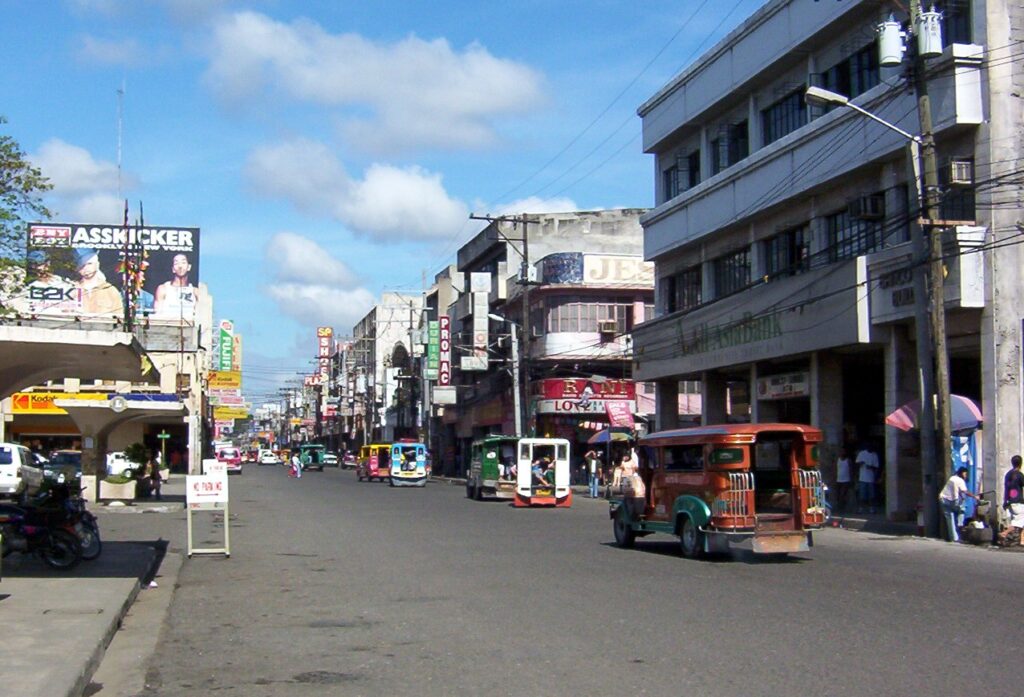
The city as it is today 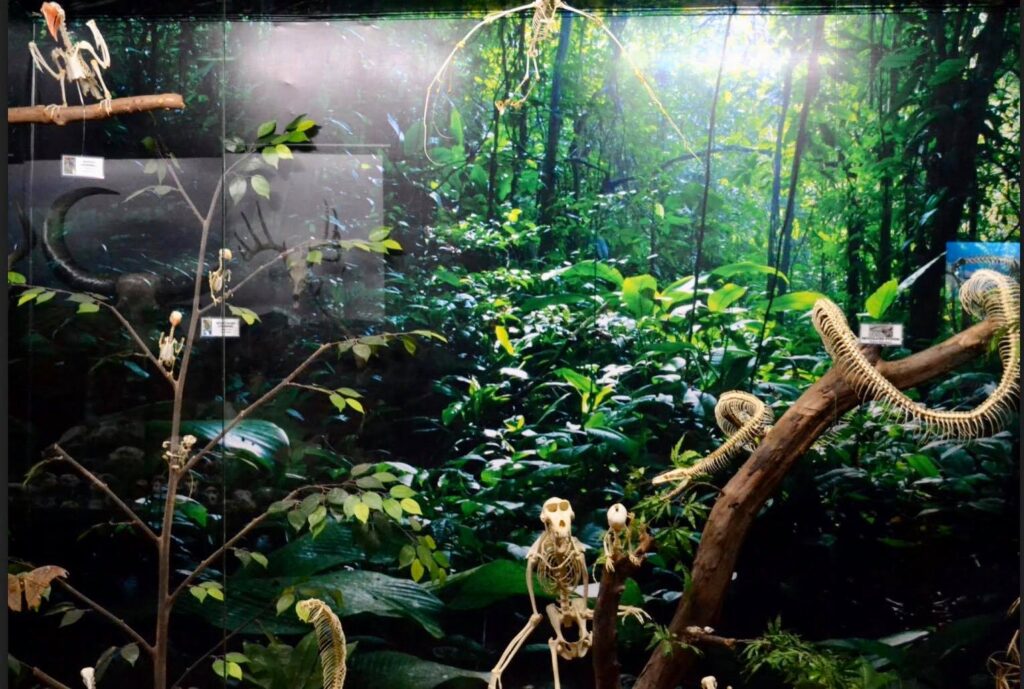
D’Bone Collector Museum
Alsa Masa
It was just a matter of time that “Alsa Masa” came into existence. In his Sun Star Davao column, Jun Ledesma made a lengthy discussion on how the uprising against the communist regime came:
“The rich families left Davao. Those who had no means stayed. Terror reigned. The CPP/NPA (Communist Party of the Philippines/New People’s Army) fronts grew in number but the source of funds to support and sustain their operations dwindled. The tax collectors now turned to their mass base for two tsupas of rice and a can of sardine from each family. As if these were not enough, they raised it to a ganta of rice plus P50 each week. Scared that they will be dealt with capital punishment squatter families strived hard to produce the ‘aid’ for the people’s revolution. The mass base was gripped in fear and hunger.”
According to Ledesma, terror ended when three-armed partisan assigned to collect taxes were rounded up by a team of Sparrows. “People were herded in a square in Gotamco, which used to be a basketball ground then. There, they witnessed the execution of three young partisans for failing to turnover their collection quota,” he wrote in his column.
One of those who executed was named Lamorena, who had several relatives and intimate friends in Agdao. “He was a young man with dreams and hopes for his parents to be liberated from poverty. He believed that joining the revolution will be the key to realizing his dreams. He has relatives in the movement, and it was easy for him to be drafted and as a young partisan and was assigned the task to collect revolutionary taxes. Unfortunately for him, the big taxpayers had abandoned the city, and the poor communities barely had any more means.
“His death triggered the shift. His kin, some of them leaders of armed partisans, distanced themselves from the Sparrows and the hardcore among the NPA. Quickly the spirit of mass uprising against the NPA spread like wildfire that engulfed Agdao, the ghettos in the stretch of Quezon Boulevard all the way to Punta Dumalag. The hunters became the hunted and they were dealt with the same gruesome style of execution.”
The Bombing of San Pedro Cathedral
San Pedro Cathedral, situated at the heart of the city right across the Sanguniang Panglungsod (City Council) building, is the oldest church in Davao City. The city’s premier historical landmark, it is now recognized as a National Cultural Treasure.
The original structure was built in 1847 during the arrival of the Spanish Conquistadors and was named after San Pedro, Davao’s patron saint.
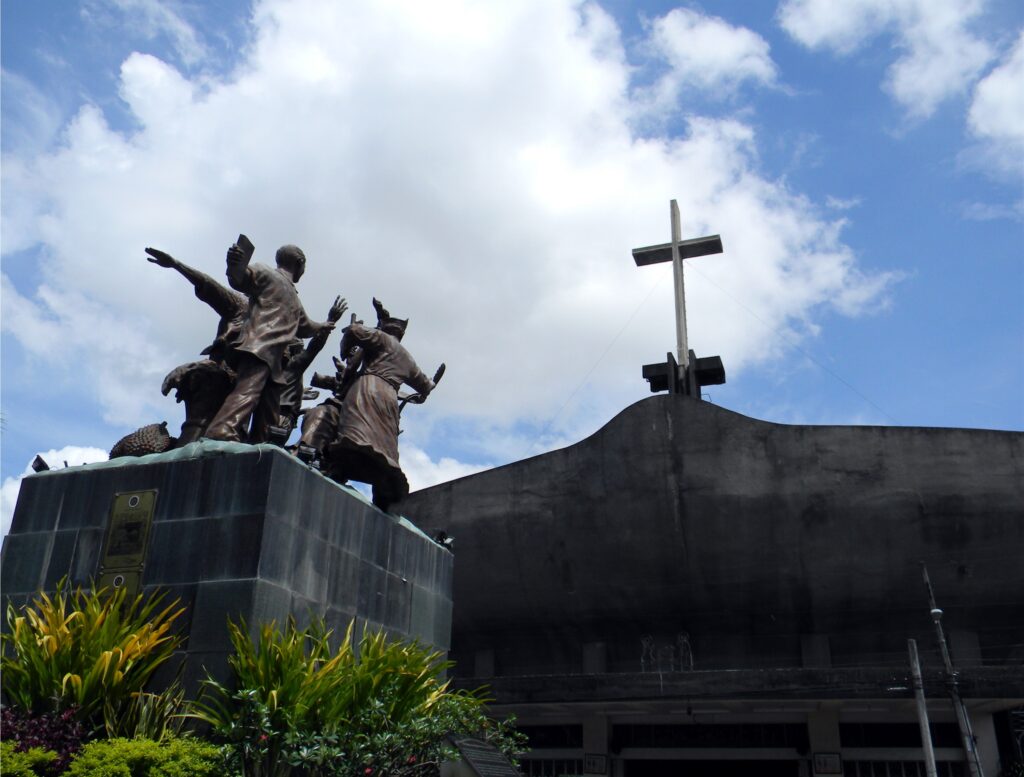
On Easter Sunday of April 1981, two grenades were thrown into the congregation as the traditional Easter service was concluding.
Floren Baltazar, who practically lived more than his life around the Cathedral selling religious items at the church ground, recalled what happened that day. “I can’t say how many died, but I remember that it took five fire trucks to clean up the blood, in the aftermath of the incident,” he tolddavaotoday.com in an interview.
According to a newspaper account, the blast killed 17 people and injured 150 others. There were several groups suspected of the bombing, and among them were the NPAs.
Rodrigo R. Duterte became the Mayor
In 1986, the People Power Revolution installed Corazon C. Aquino as the new president. Rodrigo R. Duterte – the son of the last governor of then undivided Davao Province who obtained a law degree from San Beda College in 1972, the same year that he passed the bar exam – was appointed officer-in-charge vice mayor.
In 1988, Duterte ran for mayor and won, serving until 1998. During his term, he did the almost impossible task of restoring peace and order that was divided by religion and ideological belief. He also set a precedent by designating deputy mayors representing the Lumad (the indigenous people’s group) and Moro in the city government (this was later copied in other parts of the country).
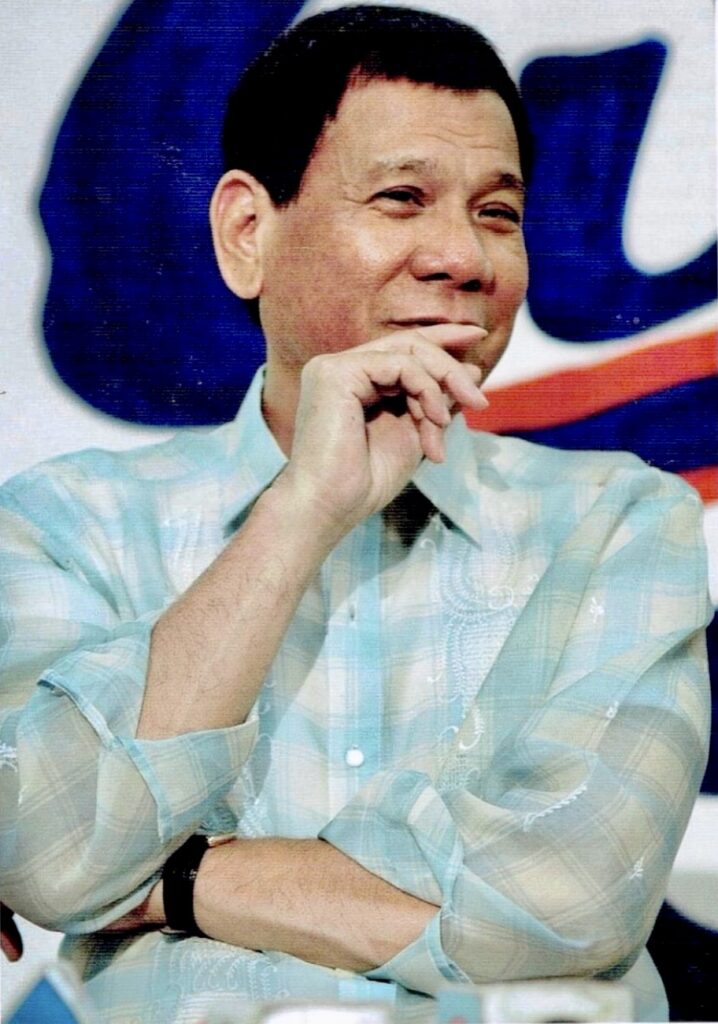
By the time his first term ended, Duterte had regained much of the city’s positive image as an ideal investment haven and tourism destination. During the 67th Araw ng Dabaw celebration, then-President Gloria Macapagal-Arroyo commented: “The Philippines is just catching up with Davao City which seems to be always leading the way for the rest of the country.”
For such accolades, Duterte had this to say: “I hold it as an article of faith in government that there can never be development and progress in any city or province in the country, unless there is stability, unless there is peace and order.”
Because Duterte was term-limited to run again for mayor in 1998, he instead ran for the House of Representatives and won as Congressman of the 1st District of Davao City. He staged a comeback in 2001 and was again elected for his fourth term. He was reelected in subsequent elections. In 2010, he was elected vice mayor with his daughter, Sara Duterte-Carpio, as mayor.
In the 2013 last election, he ran again and won. “Today, as I take my oath of office as City Mayor for the seventh time, I ask you to join me in sustaining not only this government of the people, by the people and for the people, but also in creating a government for the least, the last and the lost,” he said in his seventh inaugural.
Against all forms of criminality
“There will be no let-up in our fight against all forms of criminality,” he further said. “As a matter of policy, we will intensify our efforts in this campaign. I have said it before, I will say it again: Criminals have no place in our city except in our jails, detention cells and God forbid, in our funeral parlors should these criminals decide to fight it out with the authorities.”
To some, Duterte was a model crime-fighter; to others, he was a mass murderer. “He is unorthodox as he is popular,” wrote Davao journalist Daisy C. Gonzales. “He gained fame (or notoriety) as a no-nonsense mayor in his fight against criminality. A good source of sound bite, he is his own effective propaganda machine. He is both loved and loathed.”
The weekly American news magazine, Time, nicknamed him “The Punisher.” Human rights groups and Amnesty International have also criticized him for tolerating extrajudicial killings of corrupt officials and criminals. However, he denied any hand in the killings and blamed gang wars for the deaths, including those of known drug trade players and other crime suspects.
As he himself said in 2009: “If you are doing an illegal activity in my city, if you are a criminal or part of a syndicate that preys on the innocent people of the city, for as long as I am the mayor, you are a legitimate target of assassination.”
On June 30, 2016, Duterte assumed office as the 16th president of the Philippines.
Now a Tourist Destination
Today’s Davao is the trade and commerce center of Mindanao. It is just one hour and thirty minutes by plane from Manila (45 minutes if from Cebu City). Davao is also the gateway to East Asian countries, particularly Brunei, Indonesia, Malaysia, and Singapore.
In 2006, Davao hosted the tourism forum of the members of the Association of Southeast Asian Nations. “Davao is slow compared to Hong Kong, Bangkok, Manila, and Cebu,” wrote Ernie Abella, editor of Madayaw, a magazine released in conjunction with the event. “But you can get from sea to mountain by the time you finish the juice of a fresh coconut.”
There are several reasons why Davao is now one of the tourist destinations in the country. It is the Philippine Eagle Center’s home, the jumping off of Mount Apo, the place of controversial durian and exotic waling-waling. On a website called toptens.com, people give some reasons on why the city is such a good place to visit:
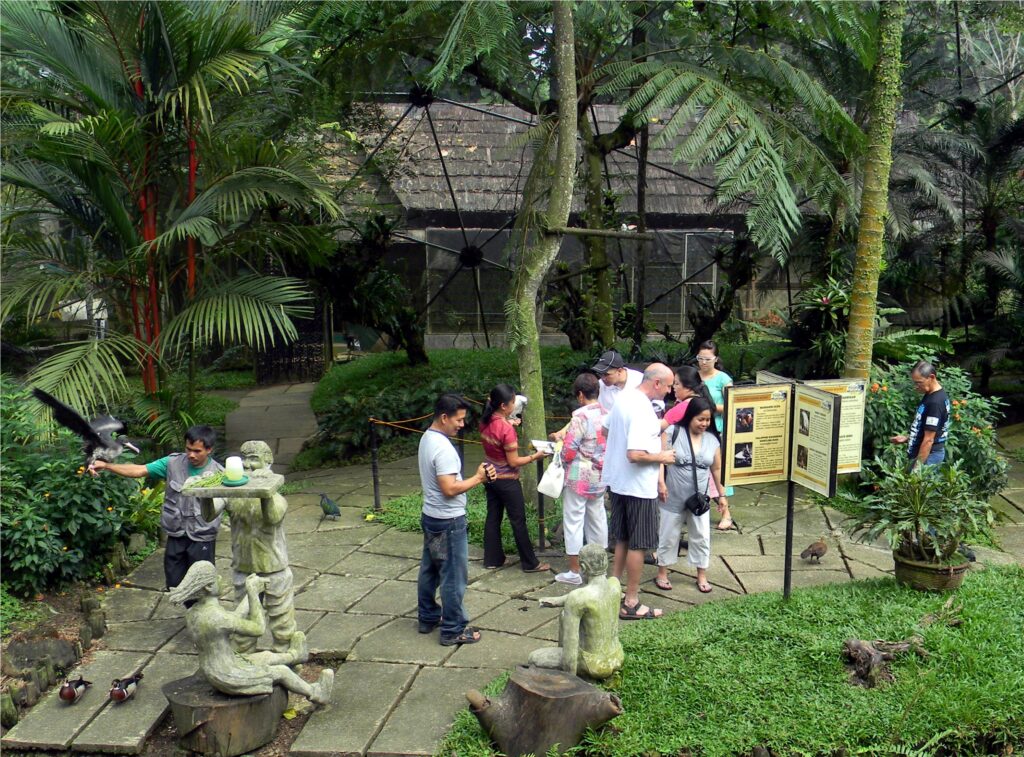
A close encounter with the birds at Malagos Garden Resort 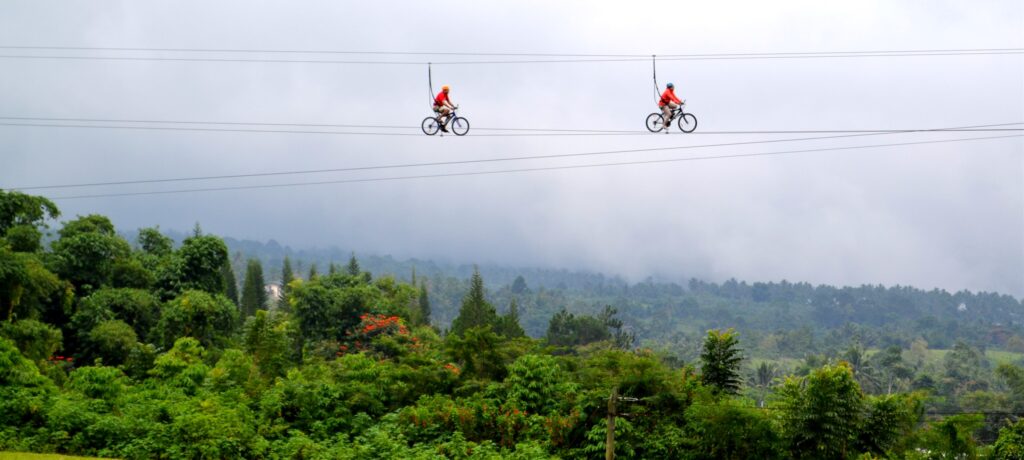
Skycycling at Eden Nature Park
“With its unique emergency response system, you can call 911 in whatever situation you are in. The city is known for its tight security and strict implementation of the law,” wrote one visitor. “It is also known to be the ‘fruit basket of the Philippines;’ from the exotic durian and mangosteen to one of the most exported products of the Philippines, banana, you will find all of them here.”
Another one commented: “Davao City is one of the most livable cities in Asia. It has a very low percentage of crime. It is not only typhoon-free but so far has not been visited by a huge typhoon or any great disaster. But one thing is sure: Davao City has very delicious and very cold clean water.”
Here’s an observation of one visitor who voted for Davao City as one of the best cities in the country: “(It is because it is) one of the safest cities in the Philippines. The crime rate is low. Taxi drivers are well monitored by the local government. I noticed when I was in Davao and hired a taxi from Davao International Airport, one of the men handed me a paper to write on regarding the behaviour of the taxi driver and the fare he asked. Of course, on that piece of paper, information where to send is included. It is really amazing. The taxi drivers could not charge what they wanted.”
With such accolades, isn’t it great for this city to be a retirement place? Let’s listen to Bob Martin, an American who has lived permanently in Mindanao. He used to reside in General Santos City, but he opted to transfer to Davao City. “I have lived in Davao City for almost five years now,” he wrote on his website, liveinthephilippines.com. “All I can say is that I love it here! I believe that Davao City is the best place to live in the Philippines. I have talked to other expats living here, and they all feel the same way too.”

